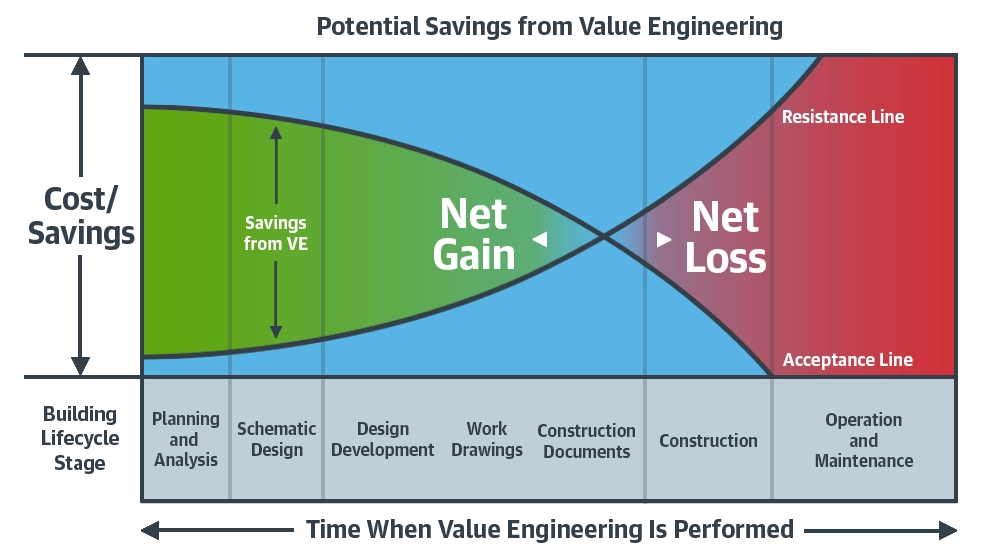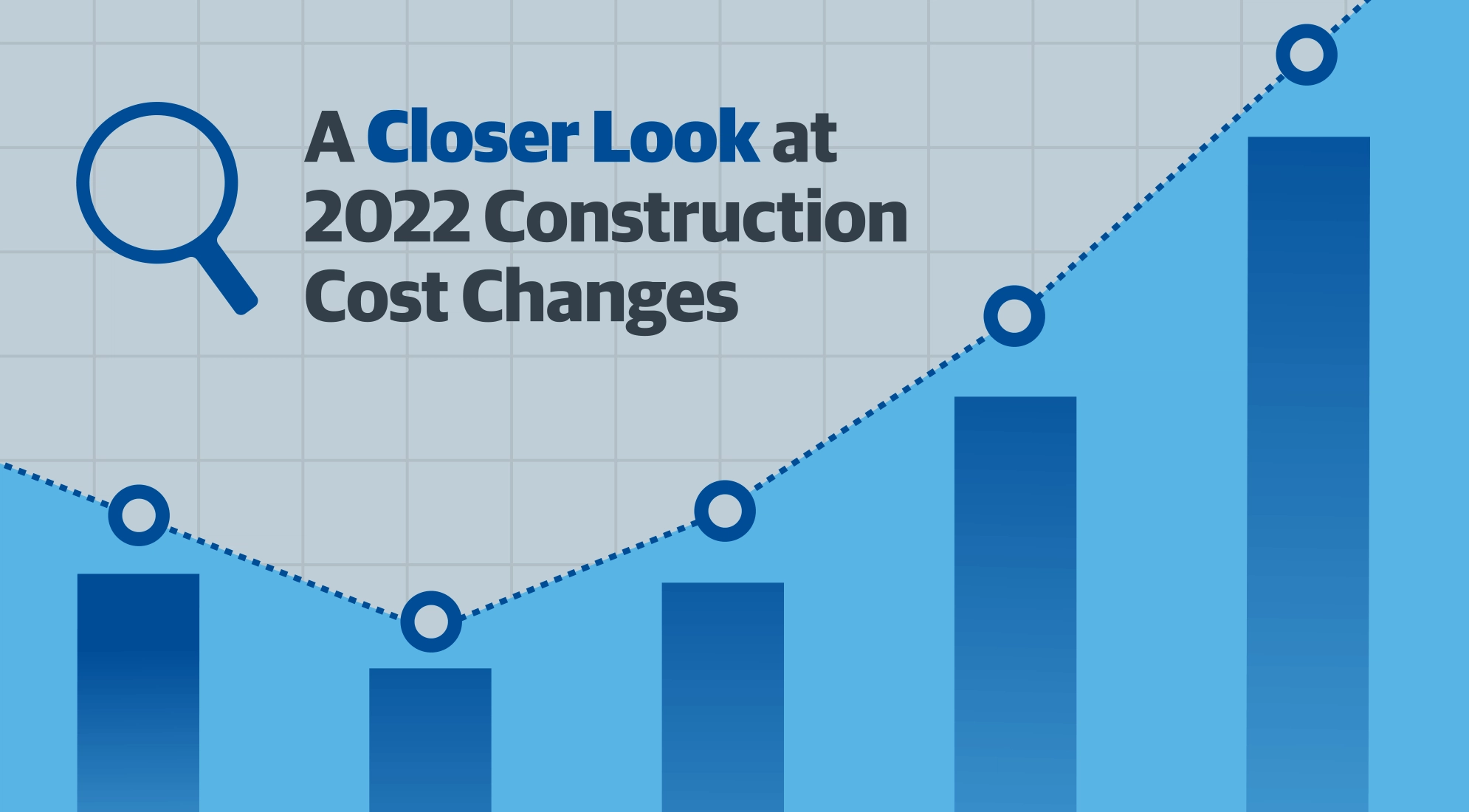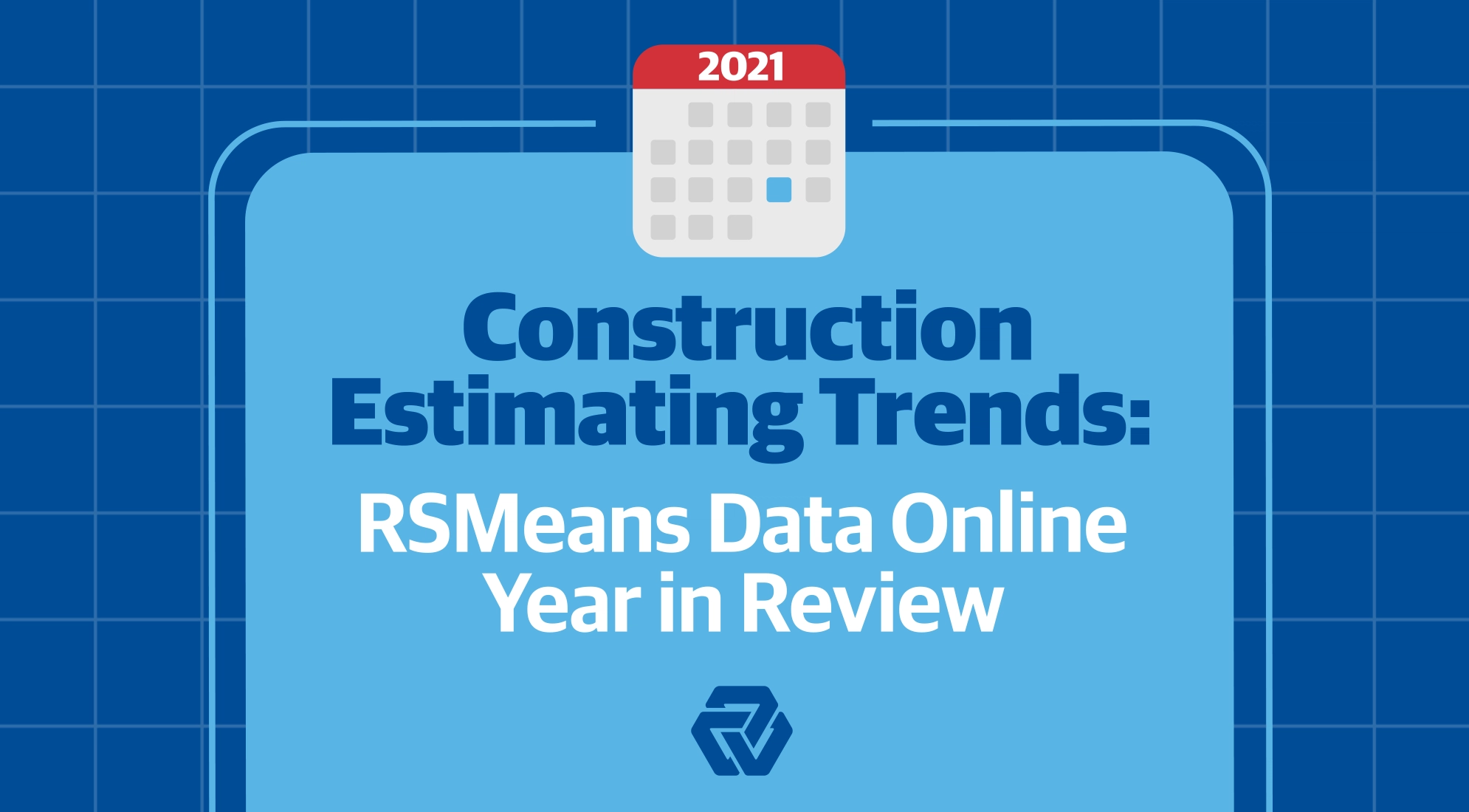Over the past several years, the construction industry has experienced more uncertainty and frenzied market movements than ever before. Tried-and-true materials are scarce and prices are surging like never before, sending budgets through the roof. But there’s still work to be done, so estimators, architects, contractors and others preconstruction pros must find alternative solutions.
This is value engineering’s moment.
Value engineering has received a reputation as a process where architectural design dreams get dashed. But the truth is, value engineering in construction can have a positive outcome for all stakeholders — architects, designers and building-product manufacturers included. When everyone embraces and actively participates in value analysis, the benefits win out and creativity can be deployed in different ways to meet project goals.
This breakdown of value engineering will cover a brief history of its creation, the optimal time to use value engineering and the steps required to maximize its benefits.
The Origins of Value Engineering
Here is a quick history lesson: Lawrence Miles was responsible for purchasing raw materials for General Electric during World War II when manufacturing was at its peak. Sounds like a great gig, but the war caused extreme material shortages. This left Miles searching for suitable alternatives that functioned similarly. He discovered that some substitutes weren’t only cost-effective, they were actually better. This realization was the origin of a new technique called “value analysis,” more commonly known today as value engineering.
Since its inception, this technique of analyzing value has been widely adopted by many industries and evolved for uses Miles never imagined. Value engineering is used to solve problems, identify and eliminate unwanted costs and improve function and quality. The set of disciplined steps in the value engineering process is meant to optimize initial and long-term investment, seeking the best possible value for the lowest cost.
When to Use Value Engineering in Construction
Technically speaking, there’s no wrong time to value engineer. But the closer the process is to the schematic stage, the better. Planning and design are the two stages of the building lifecycle where value analysis creates the most, well, value. If value engineering becomes rework or causes project delays, it is no longer beneficial to the project. This graph shows when value engineering moves from presenting a financial gain to a financial loss.
There is one area where the design team should never compromise: safety. Any change that would result in a violation of building code or otherwise jeopardize the health and well-being of the people who use the facility should be rejected immediately.
It’s important to note that value engineering isn’t simply a knee-jerk reaction to avoid going over budget. The goal isn’t to trim the bottom line, but to maximize function at the lowest possible cost. Value engineering is a methodology that ensures the owner is not over-paying for quality when an equally effective, less expensive option exists. Product quality is the ultimate prize.
Value engineering is all about making the best use of the available budget. Doing so requires know-how, teamwork and reliable construction cost data. For a deep dive into how to effectively value engineer, download our free book, “Maximizing Construction Project Budgets with Data-Driven Designs.”
The Step by Step Value Engineering Methodology
Value engineering in construction is a team sport. A group of project stakeholders — including architects, designers, estimators, engineers, contractors and project leads — is involved to score the best product possible. The Society of American Value Engineers International (SAVE International) defines value engineering as a “function-oriented, systematic, team approach to provide value in a product, system, or service.”
Value engineering is not just a concept; it’s a methodology. Whether a team wants to substitute one material or system for another, consider alternative building methods or limit environmental impact, the process of value engineering remains generally consistent.
Step No. 1: Information Gathering
Identify the material makeup and scope of a project. This step is all about collecting data and getting a clear understanding of the project. Materials, schedule, costs, drawings and specifications are studied until the team is familiar with the project concept, who will be using the end product and what the expectations entail. Once you know what you’re dealing with, you can begin to talk function.
Step No. 2: Function Analysis
Analyze the functions of the elements identified in the previous step and evaluate their necessity to the goals of the project. There are two forms of functions; “primary functions,” vital to the existence of the final product, and “secondary functions,” notable but not critical to the core of the project. Once these are identified, the team can get creative and investigate solutions.
Step No. 3: Creative Speculation
Develop alternative solutions for delivering necessary building functions. The value engineering team brainstorms to generate potential design solutions to reach the project functions. It’s smart to focus on the big-ticket items because they have the most opportunity to deliver value. At this stage of the game, no viable options are eliminated, even those with serious flaws. Next, designers and their teammates will eliminate the weak plays to present only their strongest options on game day.
Step No. 4: Evaluation
Assess the alternative solutions. By turning to subject matter experts and questioning the available options, the team can begin weighing alternatives against one another. The primary focus of this discussion should be how well each alternative can perform the function of the original solution. The evaluation may include where the facility will be built, how it will be used and the weather in the area. The details matter.
Owner expectations matter too, so those must be discussed. Delivering value is tremendous but if the facility does not do what the owner intends and falls short of the owner’s vision, the team has missed the mark. Remember that every choice has consequences. A change in one area of a facility can affect any or all other areas of the facility. The team must discuss the holistic effects of every alternative.
Step No. 5: Cost Analysis
Allocate costs to the alternative solutions. The team needs to answer two important questions: How much will the solution cost today? And how much will it cost over the facility’s life cycle?
The design team’s best tool in this step of the process is accurate construction cost data. Historical pricing is great for a rough projection of costs for known materials, equipment and tasks, but it may prove inadequate in the value engineering process.
Project estimates need to be detailed, down to assembly or unit costs. To help get to this level of detail and assess feasible alternative solutions, many architects, owners, engineers and other preconstruction professionals rely on accurate cost data from a reliable industry expert. RSMeans Data from Gordian is a highly-trusted, detailed, localized and accurate construction cost database. Such a robust resource is ideal for value engineering because it contains tens of thousands of viable alternatives.
Input from the maintenance team and lifecycle cost products help answer how much the alternative solution will cost over the long-term. This step will likely conclude with three options to choose from: the original design, one that costs a little more now and a little less later, and a final solution that costs a little less now and a little more later.
Step No. 6: Development
Develop the alternatives with the highest likelihood of success. Project timeline and available resources will influence the actions taken during this step. The team may create sketches, digital square foot models, verify cost estimates and/or validate other decisions during this time. At the very least, the team needs to assemble all recommendations, their advantages and disadvantages, and implementation plans to present to project owners.
Value Engineering: A Trusted Process
Since Lawrence Miles introduced the method to his team at General Electric, value engineering has been a process that seeks to maximize budget without sacrificing quality. 70 years later, Miles’ method has been refined and adopted by industries outside of engineering. Today, the process is still trusted by design teams to build trusting client relationships and help project owners make the most of their resources.







